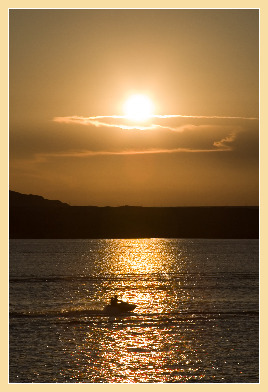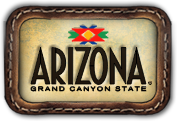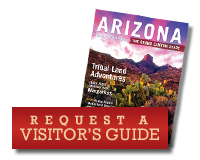The Colorado River Indian Tribes (CRIT) are composed of Mohave, Chemehuevi, Navajo and Hopi. The reservation lies along the Colorado River shoreline in western Arizona and is a short, picturesque 2 1/2 hour drive northwest of Phoenix.
CRIT’s diversity of natural areas and culture makes it a popular destination for visitors from around the world.
Amazing Native American ruins, paintings and museums are just a few of the cultural destinations on CRIT’s reservation. CRIT offers gorgeous natural wonders including the world-famous Colorado River where you can easily ride personal watercrafts, water ski and even dock your boat for a stay at the award-winning BlueWater Resort & Casino’s marina.
Enjoy a concert, a nature preserve or golf at Emerald Canyon, one of the finest landscapes in the state. And if it’s history you want, visit the memorial to the World War II Japanese internment camp.
Think you’ve seen it all? Not until you see all of this!
The Colorado River – Where to Stay & Play
 The BlueWater Resort & Casino is a great launching point for recreation on the Colorado River. The resort has a 160-dock marina, and is just one of dozens of locations where those interested in water recreation can enjoy what the Colorado River has to offer.
The BlueWater Resort & Casino is a great launching point for recreation on the Colorado River. The resort has a 160-dock marina, and is just one of dozens of locations where those interested in water recreation can enjoy what the Colorado River has to offer.
The BlueWater Resort & Casino is a state-of-the-art gaming resort with more than 200 hotel rooms offering views of the Colorado River. The resort includes a casino with more than 450 slot machines, keno, blackjack and many other gaming opportunities. It also has several restaurants, a conference center and a multi-screen movie theater. Major national acts perform frequently at the resort’s amphitheater.
Ahakhav Tribal Preserve
The Ahakhav Tribal Preserve was established in 1995 and currently consists of 1,253 acres of wilderness area and a 3 1/2 acre park. The preserve is centered around a reconstructed Colorado River backwater, which offers a variety of activities, including fishing, canoeing, birding and swimming. The preserve also maintains a 4.6-mile fitness trail as well as playground and picnic facilities located in the park.
The preserve serves many purposes. One is to provide recreational and learning opportunities for the surrounding community as well as visitors. The other is to serve as a revegetation area for endangered and threatened plants and animals native to the Lower Colorado River Basin. The Lower Colorado is an area that faces many problems, from damming that causes changes in natural stream flow to a variety of invasive species. The preserve is an ongoing project to study methods of revegetation and restoration that may be used throughout the area.
Poston Monument
This memorial monument marks the site of the Poston War Relocation Center where 17,867 persons of Japanese ancestry – the majority of whom were United States citizens – were interned during World War II from May 1942 to November 1945. All persons of Japanese descent living or working in West Coast farms, businesses, towns, cities and states were forcibly evacuated by the United States military on the grounds that they posed a threat to national security. This massive relocation was authorized by Executive Order 9066, signed by President Franklin D. Roosevelt on February 19, 1942.
This memorial is dedicated to all those men, women and children who suffered countless hardships and indignities at the hands of a nation misguided by wartime hysteria, racial prejudice and fear. May it serve as a constant reminder of our past so that Americans in the future will never again be denied their Constitutional rights, and may the remembrance of that experience serve to advance the evolution of the human spirit.
CRIT Museum
The CRIT Museum provides a comprehensive history of the Colorado River Indian Tribes and their heritages and traditions. Located at 1007 Arizona Avenue in Parker, the museum houses cultural artifacts and exhibits as well as photos showing tribal history. It also provides an overview of CRIT and its people. The exhibits and information date back to before the CRIT Reservation was established in 1865 and run through present day.
(Brought to you by the Colorado River Indian Tribes.)



